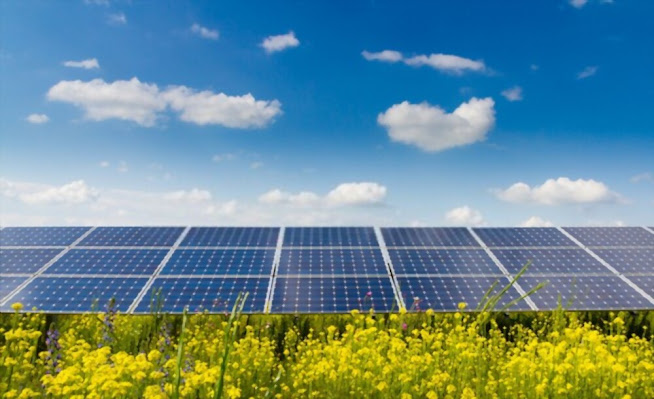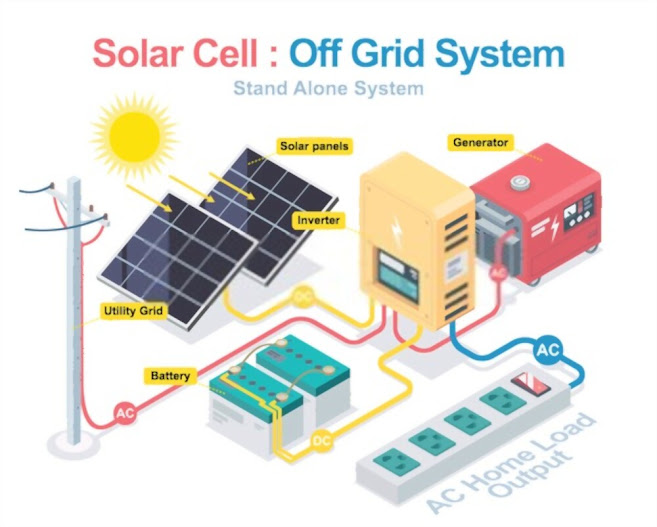How does solar energy work? | Cheap Solar Houston TX
The sun is a ball of energy that sends out light, heat, and radiation in all directions. As the sun shines on our planet, the Earth absorbs about 30% of the solar energy that hits it. If you've ever walked barefoot outside on a hot summer's day, you know how great it feels to stand beneath the bright sunlight. Now imagine what it's like to stand under one of those giant glass structures with photo-voltaic (PV) panels covering the roof!
1. How does solar energy work?
There are two main types of solar energy: passive and active. Passive solar energy is solar energy harnessed through passive means, mostly by exposure to the sun. Active solar energy is solar energy harnessed through active means, usually by the use of photovoltaic panels or solar thermal collectors and heat storage.
Because the sun radiates heat in all directions, the way we perceive the sun changes as the temperature changes. Many believe the sun revolves around the Earth, but, as the weather turns colder, that would no longer hold true. We also know there’s a flip side to this — the moon doesn’t shove as much dust and sand our way every time the sun shines. The effect isn’t uniform across the sky though. The earth does receive a certain amount of radiation. During daylight, areas of the northern hemisphere receive more daylight or radiation — because the sun is higher, and shining more directly onto the earth’s surface.
The regions of Canada and Europe receive the majority of their sunlight within 24 hours of shadows — because the southern hemisphere experiences more sunlight. The opposite is true when the sun is high in the sky; you receive less sunlight in these areas. This is different from when the sun is in the west or east — the sun doesn’t typically rise or set in the same way much, so the change in daylight or radiation will vary. Here’s an animation to show you what this does to the amount of daylight and radiation.
We know from experience that there are days where the sun is too hot; even during summer. Yesterday was one such day. I don’t know what caused the high of 90 F that day, but it certainly wasn’t the sun. Luckily, it was still 70 F when I left for work at 8:40 am, even if it felt like it was 105 F outside.
2. How can we generate electricity from solar panels?
Solar panels can be used to generate electricity by absorbing the energy from the Sun and using it to push electrons through a circuit. Solar panels are made up of two layers of semiconductor material, usually silicon. When sunlight hits a solar panel, it knocks electrons loose from the atoms in the material.
In turn, this produces light that is picked up by a receiver. The receiver compares this light to known colors and determines if specific amounts of voltage are required to light the cathode (positive) side of the panel. If not, then more sunlight is received and the circuit is completed. If the voltage is reached, however, one of two things can happen.
If the voltage is high enough, the electrons which are knocking the electrons from the atoms are blown off the anode and into the collector, which means the photovoltaic cell is exhausted, and the current is cut off. Or if the voltage is low enough (meaning too little light is being sent to the anode), then most of the electrons from the anode are taken up by the collector and the photon back into the photovoltaic cell, increasing the amount of current produced. This is the quiescence state of a photovoltaic cell, and it’s where one of its greatest weaknesses resides.
This quiescence state is caused by imperfections in the folded silicon or crystalline structure of the photovoltaic cell. These imperfections allow different amounts of electrons to traverse the cell, which is known as a bandgap. In a flat crystal made of silicon, a 90° bandgap means that all the electrons that can traverse the cell will reach the cathode in the 90° of the panel, and none will exist. If there is no imperfection, there should be no bandgaps. If there is a bandgap, then while 90° of the panel is lit, 90° of the rest of the panel is unusable. Importantly, too much light will force the electrons that cannot leave the cell to pull far too many electrons from the anode.
3. How much energy do solar panels generate?
A solar panel's efficiency is the percentage of sunlight that is converted into usable electricity. In the United States, the average solar panel is around 14% efficient, but some are as high as 19%. The amount of electricity generated by a solar panel depends on the time of day, the weather, and how it is mounted.
In addition to the panels on your house, you may have spaces available for PV installation on your roof, garage, parking lot, or wherever you can get access to solar power. Some businesses may want to install solar panels on their vehicles. Solar power options range from passive (sitting passively without any power) to active (solar panels producing power whenever the sun shines). Passive systems use photovoltaic (PV) panels and reflectors to self-power space. Active systems use tiny motors to turn the panels whenever sunlight hits them. The installation process for PV equipment differs by industry. For each type, a company may offer a different installation step-by-step guide to homeowners.
Unrivaled Solar offers several installation options for its residential and commercial electric vehicles. For vehicles that are not yet manufactured, TUnrivaled Solar has been fitted with solar roofs, which automatically redirect sunlight onto the roof to power the vehicle. It is the same technology used on Unrivaled Solar in commercial parking garages, Apple Store constructions, and Fortune 500 businesses.
Solar roofs also allow drivers to store excess renewable energy in battery packs throughout the day, which is useful for grid storage when the sun isn’t shining. Your home or business may have space for a traditional solar system. A typical solar system has tiny panels, photovoltaic cells, a fluid current, and an inverter. When the sun is shining, energy from the sun is directed toward your home or business. Electrical energy can be created from sunlight or purchased from an electricity company (like your utility). Depending on your location, you may need to hire or purchase an electrician to install the solar system. The most common electricians for solar are handyman, plumber, and installer.
4. What are the pros and cons of solar power?
Solar power is a great way to save money and help the environment. The U.S. Department of Energy says that solar power can be up to 90% less expensive than other types of energy. The cost of a solar power system depends on its size and what it’s powering. You can use it for your home or for outdoor activities like gardening, snowshoeing, or playing with your kids — it’s all the same cost. Many backers of the Peloton Solar Power System pledge that they will continue using it after its release.
At $2,980 and with a three-year warranty, the Peloton Solar System is probably the most expensive home solar system ever offered. At first glance, you might wonder how people can afford to spend so much on a solar system. Isn’t it more expensive per watt than, say, a wind turbine installed on a house? The Peloton System uses panels rated at 633 watts per square foot, which the Department of Energy says is comparable to a 40-foot tall solar panel, which generally costs $80,000. Meanwhile, a solar panel, which has one roof, typically costs about $9,000.
It goes without saying that the cost of electricity is gonna vary, depending on where you live. The price of solar — it’s the panels, the installation, and your local electric rate — is independent of where you live.
Before we get into the specifics of the Peloton product, including its specs, best practices for owning a solar system, and how much it will cost you, let’s talk about why people invest so much in this hobby. As Kelly Klump notes for Forbes, “Owning a home and/or business is an expensive investment, but arguably one of the most important.” The reason is that you have control over getting the most out of your investment and can take drastic actions to increase the utility of your investment based on your needs.
Solar energy has become an increasingly popular way to generate electricity. Its popularity lies in the fact that it is a clean, renewable source of energy, which means it's one of the best choices for combatting climate change. Also, thanks to technological advancements, solar energy is now more affordable than ever before, making it a practical choice for your home.





Comments
Post a Comment